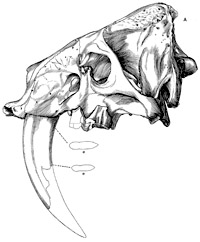Museum, University of Nebraska State
Date of this Version
1967
Document Type
Article
Citation
The University of Nebraska State Museum Volume 6, Number 4 (1967), pp. 43-58, Figs. 1-7
Abstract
The contact between the Brule Formation (Oligocene) and the Gering Formation (Miocene) can be readily distinguished in the Wildcat Ridge area, as elsewhere in western Nebraska. At the critical fossiliferous exposures at Castle Rock in Scotts Bluff County, the contact on the south face between the two formations is defined as 129 feet above the base of the "Upper Ash" bed, which corresponds to the upper portion of Darton's (1899, PI. C, Fig. D, following p. 754) "sandy phase" in the upper part of the Brule. Certain key beds in the Gering Formation can be traced laterally from a channel facies to a proximal-floodplain facies, then to a distal· floodplain facies, and finally to an interstream-divide facies. The sediments of the latter two facies are massive and very fine-grained, and in wme respects, similar to the argillaceous siltstone of the underlying Whitney Member of the Brule Formation. Significant localities for observing the facies problems of the Gering Formation are to be found along the salient of Wildcat Ridge from Twin Sisters in Banner County to Castle Rock in Scotts Bluff County, Nebraska. The geographic location of the type locality of the Gering Formation also is discussed.
Included in
Entomology Commons, Geology Commons, Geomorphology Commons, Other Ecology and Evolutionary Biology Commons, Paleobiology Commons, Paleontology Commons, Sedimentology Commons


Comments
Copyright © 1967 Nebraska State Museum. Used by permission.